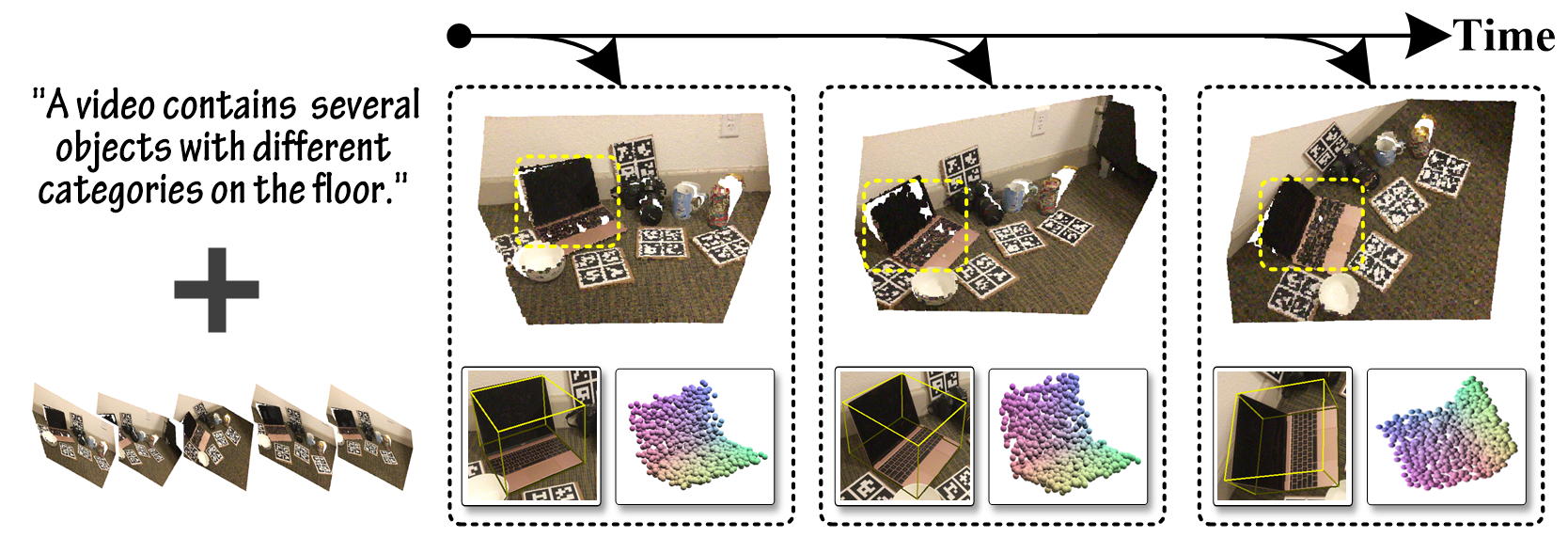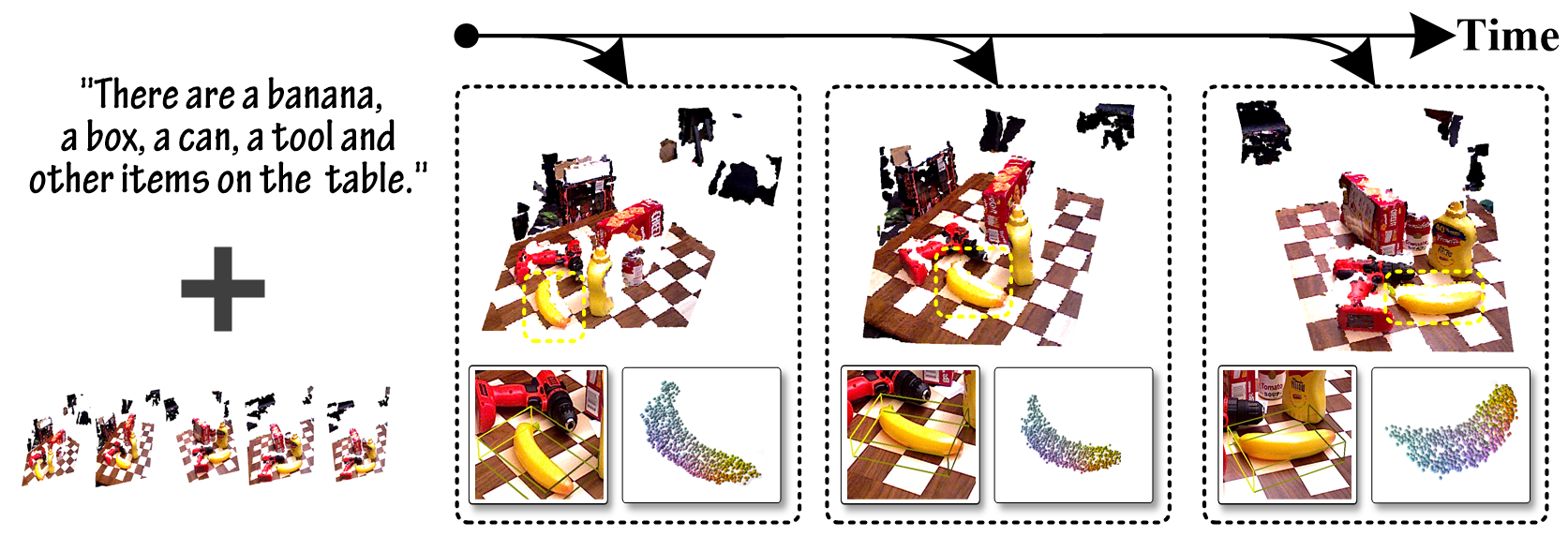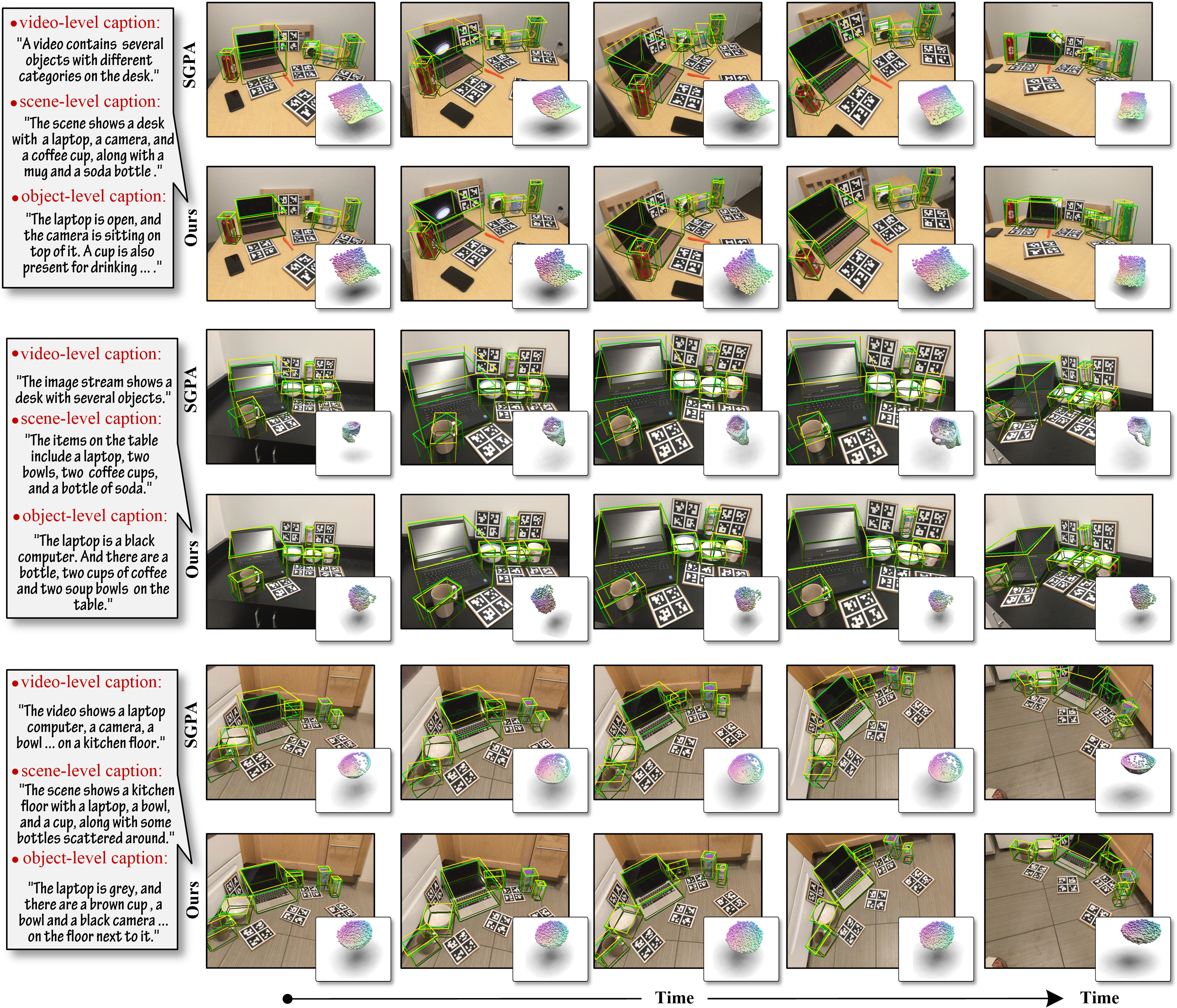L4D-Track: Language-to-4D Modeling Towards 6-DoF Tracking and Shape Reconstruction in 3D Point Cloud Stream (Accepted by CVPR2024)
This is the official implementation of our paper L4D-Track: Language-to-4D Modeling Towards 6-DoF Tracking and Shape Reconstruction in 3D Point Cloud Stream
3D visual language multi-modal modeling plays an important role in actual human-computer interaction. However, the inaccessibility of large-scale 3D-language pairs restricts their applicability in real-world scenarios. In this paper, we aim to handle a real-time multi-task for 6-DoF pose tracking of unknown objects, leveraging 3D-language pre-training scheme from a series of 3D point cloud video streams, while simultaneously performing 3D shape reconstruction in current observation. To this end, we present a generic Language-to-4D modeling paradigm termed L4D-Track, that tackles zero-shot 6-DoF Tracking and shape reconstruction by learning pairwise implicit 3D representation and multi-level multi-modal alignment. Our method constitutes two core parts. 1) Pairwise Implicit 3D Space Representation, that establishes spatial-temporal to language coherence descriptions across continuous 3D point cloud video. 2) Language-to-4D Association and Contrastive Alignment, enables multi-modality semantic connections between 3D point cloud video and language. Our method trained exclusively on public NOCS-REAL275 dataset, achieves promising results on both two publicly benchmarks. This not only shows powerful generalization performance, but also proves its remarkable capability in zero-shot inference.
The overall framework.
The results of Unseen objects with known categories.
The results of Unseen objects with unknown categories.
- Linux (tested on Ubuntu 20.04)
- Python 3.6.13
- CUDA 11.3
- PyTorch 1.7.1
conda create -n l4dtrack python=3.6
conda activate l4dtrack
conda install pytorch==1.7.1 torchvision==0.8.2 torchaudio==0.7.2 cudatoolkit=11.0 -c pytorch
cd l4dtrack
pip install -r requirements.txt
Download real_test, real_train, ground-truth annotations and mesh models provided by NOCS. Then process these files following SPD. And download segmentation results from Mask R-CNN, and predictions of NOCS from SPD. The dataset is organized as follows:
── NOCS275
├── Real
├── gts
└── mrcnn_results
└── nocs_results
└── SGPA_results
└── 6D-ViT_results
├── obj_models
Training and Testing sets follow PoseCNN. The training set includes 80 training videos 0000-0047 & 0060-0091 and synthetic data 000000-079999. The testing set includes 2949 keyframes from 10 testing videos 0048-0059. The corresponding file organization as follows:
── YCB-Video
├── data
├── models
├── classes.txt
├── keyframe.txt
├── train_data_list.txt
├── test_data_list.txt
We need to execute the following script to generate the train and test data list and their label.pkl.
python dataset/real275_data_preprocess.py
We also need to execute the following script to generate the corresponding caption embeedings as JSON format.
python models\video_language_model\save_capthon_embeddings.py
Then, you can make an evaluation for NOCS-REAL275 using following command.
python evaluate_pose_nocs.py
Then, you can make an evaluation for YCB-Video using following command.
python evaluate_pose_ycbvideo.py
You can get running speed at the same time.
You can train using the following command.
python train_model.py --gpu 0,1,2,3
You can modity the training config in the demo.
(1) The training dataset is provided by NOCS.
(2) Our code is developed based on Pointnet2.PyTorch, SPD, CLIP and SGPA.




